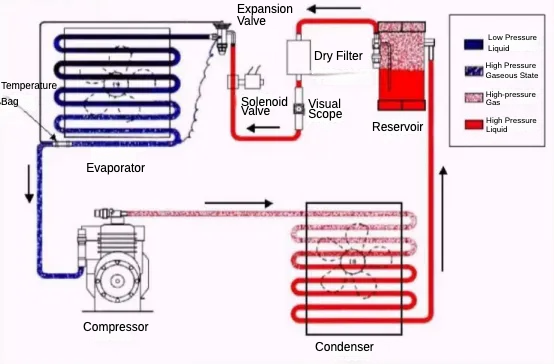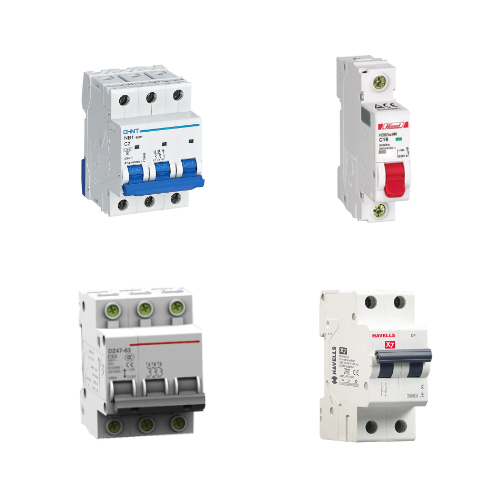Introduction
A single-phase energy meter is specifically designed for single-phase power systems, which are commonly used in residential and small commercial buildings. Understanding how these meters’ function and their various features helps in better energy management and ensures efficient billing. This article provides an in-depth look at single-phase energy meters, covering their components, working principles, types, features, and applications.
What is a Single-Phase Energy Meter?
A single-phase energy meter is a device used to measure the electrical energy consumed in a single-phase AC power system. These meters are primarily installed in homes and small businesses where electricity is supplied through two wires: one live (phase) and one neutral. The voltage in a single-phase system is typically 230V or 120V, depending on the country, with power delivered to lighting, small appliances, and general household equipment.

The meter calculates energy consumption by measuring voltage and current and then converting it into kilowatt-hours (kWh), the standard unit of electrical energy billing.
Components of a Single-Phase Energy Meter
A single-phase energy meter is composed of several key components that work together to monitor and record energy consumption:
Current Coil (CT):
This coil is connected in series with the load and measures the current passing through the phase wire.

Voltage Coil (PT):
The voltage coil is connected parallel to the phase and neutral wires to monitor the system’s voltage.

Permanent Magnet:
This component provides a braking force to control the rotation of the disc, ensuring accurate measurement.
Display Unit: The display unit (digital or mechanical) shows the total energy consumed, usually in kWh. Some advanced meters also display real-time power usage and voltage.

Microcontroller and Memory (for Digital Meters):
Digital meters contain a microcontroller that processes signal from the voltage and current sensors. They also have memory for storing data.
Communication Module:
Some advanced meters come with communication modules (like Wi-Fi, GPRS, or RF) for remote data transmission and monitoring.

How Does a Single-Phase Energy Meter Work?
A single-phase energy meter measures the power used by multiplying the instantaneous voltage and current passing through the system. The process can be broken down into the following steps:
Measurement of Current and Voltage:
The current coil detects the amount of current flowing through the live wire.
The voltage coil measures the voltage across the phase and neutral wires.
Multiplication and Energy Calculation:
The meter multiplies the current and voltage readings to calculate instantaneous power (in watts). Over time, the meter integrates this power to compute the total energy in kilowatt-hours (kWh).
Recording of Energy Consumption:
In electromechanical meters, the energy is represented by the number of revolutions of a rotating disc.
In digital meters, the readings are processed by a microcontroller and shown on the display.
Data Logging and Communication:
In advanced meters, data can be logged and transmitted remotely to the utility company via communication modules.
Types of Single-Phase Energy Meters
Electromechanical Energy Meters:
These traditional meters use a rotating aluminum disc to measure energy.
Although reliable, they lack advanced features such as remote monitoring.
Static (Electronic) Energy Meters:
These meters use digital components to measure energy accurately.
They are more reliable, have no moving parts, and support remote data logging.
Prepaid Energy Meters:

Users can load credit in advance to access electricity.
Once the credit is exhausted, the power supply is cut off until more credit is added.
Smart Energy Meters:
These meters provide real-time data and are integrated with communication networks.
They allow remote monitoring, load management, and dynamic pricing.
Key Features of Single-Phase Energy Meters
High Accuracy: Modern energy meters provide precise energy measurements, reducing billing discrepancies.
Remote Monitoring: Smart meters allow utilities to monitor energy usage remotely, improving efficiency.
Tamper Detection: Advanced meters come with anti-tamper features to detect any unauthorized attempts to alter readings.
Real-Time Data Display: Some meters display power usage, voltage, and other parameters in real-time.
Prepaid and Postpaid Options: Users can choose between prepaid or postpaid billing systems depending on the meter type.
Compact Design: Single-phase meters are designed to fit easily into residential meter boxes.
Applications of Single-Phase Energy Meters
Residential Buildings:
These meters are used to monitor household energy consumption.
Small Commercial Establishments:
Shops, cafes, and small businesses with single-phase power supply use these meters.
Temporary Sites:
Construction sites and temporary installations often rely on single-phase meters for power monitoring.
Street Lighting:
Single-phase meters are used to track energy consumption for street lighting systems.
Renewable Energy Systems:
Small solar PV installations connected to the grid use single-phase meters for energy accounting.
Standards and Regulations of Single-Phase Energy Meters
Single-phase energy meters must comply with international and regional standards to ensure accuracy and reliability. Some key standards include:
IEC 62052-11: General requirements for metering equipment.
IEC 62053-21: Defines the accuracy requirements for static meters.
ANSI C12: Standards for energy meters used in North America.
IS 13779: Indian standards for single-phase meters.
Meters must also meet local regulations to ensure safety, accuracy, and interoperability with utility systems. Additionally, modern smart meters must comply with cybersecurity standards to prevent data breaches.
Conclusion A single-phase energy meter is an essential device for monitoring energy consumption in homes and small businesses. With different types ranging from electromechanical to smart meters, these devices offer varying levels of functionality, accuracy, and convenience. As the demand for efficient energy management grows, the use of advanced meters with features like real-time monitoring and remote communication is becoming more common. Complying with standards ensures these meters operate safely and accurately, contributing to sustainable energy use. Whether for residential, commercial, or renewable applications, single-phase meters are integral to modern electrical systems.






